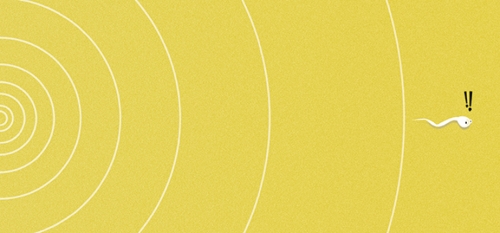Therapeutic ultrasound — which uses a different frequency from the ultrasound that gives us our first images of a growing fetus — may be able to prevent pregnancy by depleting sperm reserves in men. James Tsuruta and colleagues have shown that one therapeutic ultrasound treatment eliminates developing sperm cells in rats. The potential contraceptive effects of ultrasound are long-term, reversible, and inexpensive, without the use of hormones.
Tsuruta studied cellular communication as a grad student. He became an expert on Sertoli cells, supportive “nurse cells” essential for sperm development. That expertise attracted the attention of the Parsemus Foundation, a group dedicated to finding low-cost medical solutions that the pharmaceutical industry neglects. Reports published in the 1970s stated that rat sperm could be depleted with ultrasound. The reports were not well-received by the scientific community and were largely forgotten. Parsemus invited Tsuruta to help lead a team trying to verify the published experiments.
The conventional thinking is that one egg is an easier target than millions of sperm. But in fact, “it takes millions of sperm to provide the few that are strong enough to fertilize an egg,” Tsuruta says. In fertile men, sperm production cycles constantly. Ultrasound depletes all stages of developing sperm, from the youngest spermatocytes to the mature spermatozoa. Once sperm reserves are eliminated, fertility is impossible. Tsuruta hopes that spreading this information about sperm biology will change the misperceptions that support a funding bias in favor of contraception research that focuses on women.
Efforts to understand how ultrasound depletes sperm could open up new avenues for research. A single sperm takes seven weeks to mature; yet experiments from the 1970s found that ultrasound confers infertility for twenty-four weeks. Tsuruta speculates that the low number of resident sperm stem cells may temporarily alter the sperm stem-cell instruction program. Another effect could be structural. Tight junction bridges between Sertoli cells form a barrier against infiltrating immune cells. If ultrasound ruptures the barrier, the Sertoli cells may need time to repair the tight junctions.
Tsuruta’s team is trying to find the minimal dose of ultrasound that can safely cause infertility in rats. Long-term, Tsuruta wants to comply with strict regulations in wealthy countries while keeping the treatment inexpensive for developing countries.
Tsuruta points out that ultrasound contraception won’t stop HIV exchange between sexual partners, but he says it could limit the number of new babies born HIV-positive. Pregnancy-related deaths common to resource-poor areas would be prevented by effective contraception. And if ultrasound proves to be a viable male contraceptive, men will have another option for sharing responsibility for family planning.
Ginnie Hench earned her doctorate from UNC’s Department of Microbiology and Immunology in the School of Medicine before working as a postdoc in the Department of Biology in the College of Arts and Sciences and as director of UNC’s HHMI Future Scientists and Clinicians fellowship program with the Office for Undergraduate Research. She is now an undergraduate lab supervisor in the Department of Chemistry in the College of Arts and Sciences.
James Tsuruta is an assistant professor of pediatrics in the School of Medicine.


